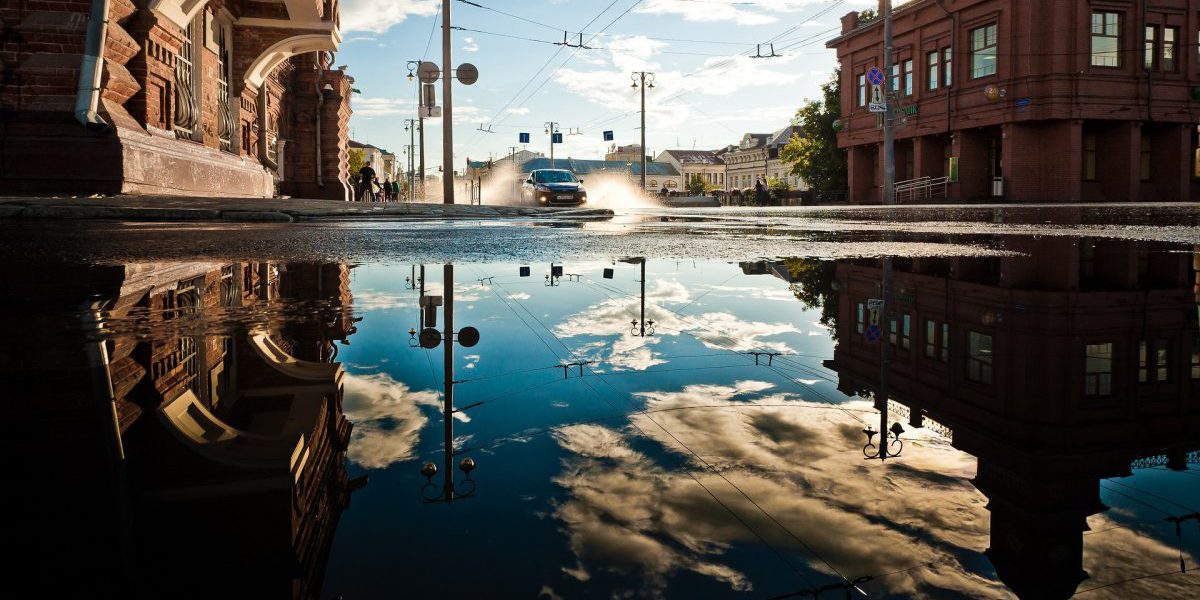If you live in an area that experiences flooding over a short period of time, you should know the dangers that flooded roadways bring to vehicles. As little as 6 inches of water can damage your vehicle and 12 inches of water could sweep your car off the road. The depth of water is not always obvious, so it is best to be cautious and never attempt to drive through standing water if you can avoid it. Most of the time, a flooded roadway will have murky water – If you can’t see what’s in the water, you could risk damaging your car by hitting large rocks, tree branches, or other debris.
Find out what to do if your vehicle is damaged by flooding, and how to spot flood damage when shopping for a used car.
What to check if your car is flooded:
Call your insurance company
Regardless of the extent of the flood damage, you should inform your insurance company that your vehicle has been affected by a flood. Flood damage is generally covered under Comprehensive insurance as part of an Auto Insurance policy.
Do not start the vehicle
While it can be tempting to see if your car still works, starting the car could damage your engine if there is water in it. To move the vehicle, you should have it towed or transported.
Check how deep the vehicle was submerged
Check If there is a distinguishing water line to tell how deep the car was submerged.
Check carpet, upholstery and door trim panels for dampness
Work quickly to prevent mold and bacteria from forming by drying out the interior of your vehicle.
Check the oil and air filter
If the level of oil appears to be high or you see droplets of water on the dipstick or air filter, do not attempt to start your car.
How to detect flood damage when buying a used car:
Many cars that are declared as totaled are cleaned up and re-sold. Even if a car looks good and seems to run fine, problems can appear months or even years later in a flood damaged vehicle due to the corrosion of critical components. This is because corrosion can eat away at materials long after your car is dry. If you are looking to buy a used car, you are more likely to get the truth about a vehicle if you are buying from a reputable dealer.
Get the title checked
Before buying a used car, have a look at the vehicle identification number (VIN) and get a comprehensive history of the car. Look on the report for keywords like “flood damage” or “salvage”, or if the car came from a flood-damaged region.
Use your nose
Smell the inside of the car for any signs of mold or mildew, which can be a sure sign that the car was exposed to significant amounts of water. Be aware of strong scents of air freshener if the dealer is trying to hide an unpleasant scent.
Check carpet, and upholstery for dampness and for mis-matched fabrics
Including the front, back, roof of the car, and under the seats.
Inspect for dirt and mud stains
Flooding can cause dirt and debris to collect in locations even a dealer can miss.
Check for rust or corrosion
Check in the vents, trunk, dashboard, beneath the seats and underneath the vehicle.
Turn on all power options
When you turn the ignition, listen for any unusual sounds. Check the headlights, turn signals, hazard lights, air conditioning, radio, wipers, and cigarette lighter to ensure they work as expected.
Check the exterior lights
Look closely at all lamps – headlights and taillights to see if they appear to be foggy or have beads of moisture. There might even be a visible waterline.
Have a professional inspect the vehicle
When in doubt, a professional automotive technician should make the evaluation and check for any signs of flood damage.
Fuse Insurance Ltd. is the evolution of the commercial insurance brokerage, and the first of its kind in Western Canada. Backed by policies from a selection of A-rated insurers, Fuse Insurance can provide coverage for businesses large and small from almost any industry. For further information or to get an online quote now, click here or call us at 1-866-387-FUSE (3873) for more details.






